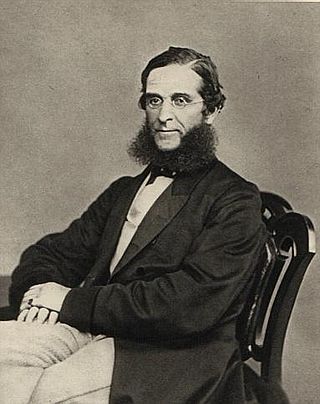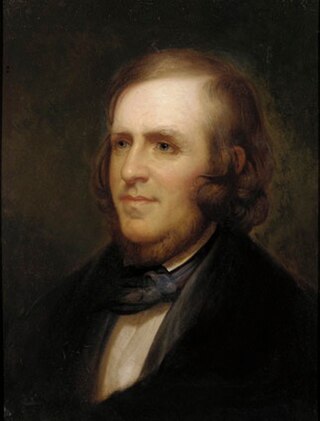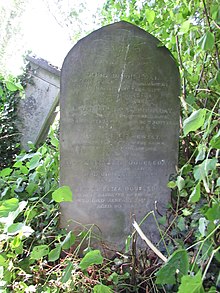
Admiral William Henry Smyth was a Royal Navy officer, hydrographer, astronomer and numismatist. He is noted for his involvement in the early history of a number of learned societies, for his hydrographic charts, for his astronomical work, and for a wide range of publications and translations.

Sir John Evans was an English archaeologist and geologist.
Reginald Stuart Poole, known as Stuart Poole, was an English archaeologist, numismatist and Orientalist. Poole was from a famous Orientalist family as his mother Sophia Lane Poole, his uncle Edward William Lane and his nephew Stanley Lane-Poole famous for their work in this field. His other uncle was Richard James Lane, a distinguished Victorian lithographer and engraver.

Major General Sir Alexander Cunningham was a British Army engineer with the Bengal Engineer Group who later took an interest in the history and archaeology of India. In 1861, he was appointed to the newly created position of archaeological surveyor to the government of India; and he founded and organised what later became the Archaeological Survey of India.

Francis Walker was an English entomologist. He was born in Southgate, London, on 31 July 1809 and died at Wanstead, England on 5 October 1874. He was one of the most prolific authors in entomology, and stirred controversy during his later life as his publications resulted in a huge number of junior synonyms. However, his assiduous work on the collections of the British Museum had great significance.
John Yonge Akerman (1806–1873) was an English antiquarian specializing mainly in numismatics. He also wrote under the pseudonym Paul Pindar.

Sir Henry Ellis was an English librarian and antiquarian, for a long period principal librarian at the British Museum.

Charles Roach Smith, FSA, was an English antiquarian and amateur archaeologist who was elected a fellow of the Society of Antiquaries of London, and the London Numismatic Society. He was a founding member of the British Archaeological Association. Roach Smith pioneered the statistical study of Roman coin hoards.
Henry Perigal Borrell was a British numismatist. He was the son of John Henry Borrell, a London clockmaker from Couvet, and Kitty Borrell. Having learned the numismatics trade in London, he traveled to the Ottoman Empire and set up home and shop in Smyrna as a trader, from 1818 right up until his death. Two years after his arrival, in 1820, he married Emelia Boddington in Smyrna. In the 1820s, he obtained an inscription from Aphrodisias, a copy of which he sent to August Boeckh. In 1838 he met the 6th Duke of Devonshire at Smyrna and sold him the Chatsworth Head. Via the Bank of England, Borrell also supplied coins to the British Museum.
Warwick William Wroth was a numismatist and biographer. He was Senior Assistant Keeper of Coins and Medals in the British Museum and one of the original contributors to the Dictionary of National Biography, with which he was associated almost until its completion.

James Barton Longacre was an American portraitist and engraver, and the fourth Chief Engraver of the United States Mint from 1844 until his death. Longacre is best known for designing the Indian Head cent, which entered commerce in 1859, and for the designs of the Shield nickel, Flying Eagle cent and other coins of the mid-19th century.

Benjamin Franklin Peale was an employee and officer of the Philadelphia Mint from 1833 to 1854. Although Peale introduced many innovations to the Mint of the United States, he was eventually dismissed amid allegations he had used his position for personal gain.

The Wardak Vase is an ancient globular-shaped buddhist copper vase that was found as part of a stupa relic deposit in the early nineteenth century in the Wardak Province of Afghanistan. The importance of the vase lies in the long Kharoshthi inscription which dates the objects to around 178 AD and claims that the stupa contained the sacred relics of the Buddha. Since 1880, the vase has been part of the British Museum's Asian collection.
Walter Hawkins was a British ship and insurance broker, antiquarian and numismatist, based in the City of London.

Sir Thomas Reade was a British army officer during the Napoleonic Wars, known also as a collector.

William Debonaire Haggard FSA, FRAS was a banker of the city of London, a numismatist, and an expert on bullion. He was the Principal of the Bullion Office of the Bank of England in the 1840s.

Elizabeth Jean Elphinstone Pirie was a British numismatist specialising in ninth-century Northumbrian coinage, and museum curator, latterly as Keeper of Archaeology at Leeds City Museum from 1960 to 1991. She wrote eight books and dozens of articles throughout her career. She was a fellow of the Royal Numismatic Society, president of the Yorkshire Numismatic Society and a fellow of the Society of Antiquaries of London.
George Richard Corner (1801–1863) was a 19th-century English antiquarian. He published many articles on the history of Southwark, across several journals, and two books on the borough.

The Hexham hoard is a 9th-century hoard of eight thousand copper-alloy coins of the Anglo-Saxon Kingdom of Northumbria, which were discovered whilst a grave was being dug close to Hexham Abbey in 1832.
















